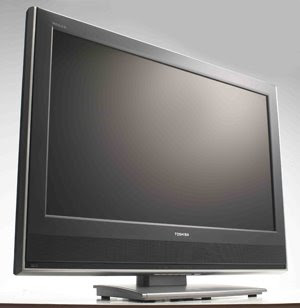A television program (U.S.), television programme (UK), or television show (U.S) is something that people watch on television. . It may be a one-off broadcast or, more usually, part of a periodically recurring television series.
A television series that is intended to be broadcast a finite number of episodes is usually called a miniseries or serial (although the latter term also has other meanings). North Americans call a short run lasting less than a year a season; People of the United Kingdom and the Republic of Ireland call this a series. This season or series usually consists of 6–26 installments in the USA, but in the UK there is no defined length. U.S. industry practice tends to favor longer seasons than those of some other countries.
A single instance of a program is called an episode, although particularly in the USA this is sometimes also called a "show", and in the UK a "programme" and the USA a "program". A one-off broadcast may, again particularly in the USA and USA-influenced countries, be called a "special", or particularly in the UK a "special episode". A television movie or in the UK a television film ("made-for-TV" movie) is a film that is initially broadcast on television rather than being released in cinemas or direct-to-video, although many successful television movies are later released on DVD.
Today, advertisements play a role in most television programming, such that each hour of programming can contain up to 15 minutes of advertisements in some countries. By contrast, being publicly funded, the BBC in the United Kingdom does not run advertisements, except to advertise its own programmes. Its promotions appear between and near the end of programmes but not in the middle of them, much like the Public Broadcasting Service (PBS) in the United States and the Australian Broadcasting Corporation (ABC) in Australia. The number of commercial interruptions can also vary, for instance Japanese television tends to prefer fewer and longer commercial breaks while American television has several spread throughout the program. This has an impact on the writing of the show; in order to provide a smooth transition as well as keep the audience from switching channels. With rise of internet video clips, there is serious debate about where the future of television programs is going.
Program content
The content of television programs may be factual, as in documentaries, news, and reality television, or fictional as in comedy and drama. It may be topical as in the case of news and some made-for-television movies or historical as in the case of such documentaries or fictional series. It may be primarily instructional as in the case of educational programming, or entertaining as is the case in situation comedy, reality TV, or game shows, or for income as advertisements.
A drama program usually features a set of actors in a somewhat familiar setting. The program follows their lives and their adventures. Many shows, especially before the 1980s, maintained a status quo where the main characters and the premise changed little. If some change happened to the characters lives during the episode, it was usually undone by the end. (Because of this, the episodes could usually be watched in any order.) Since the 1980s, there are many series that feature progressive change to the plot, the characters, or both.
Common TV program periods include regular broadcasts (like TV news), TV series (usually seasonal and ongoing with a duration of only a few episodes to many seasons), or TV miniseries which is an extended film, usually with a small pre-determined number of episodes and a set plot and timeline. Miniseries usually range from about 3 to 10 hours in length, though critics often complain when programs hit the short end of that range and are still marketed as "minis." In the UK, the term "miniseries" is only usually used in references to imported programmes, and such short-run series are usually called "serials".
Older American television shows began with a Pilot title sequence, showed opening credits at the bottom of the screen during the beginning of the show, and included closing credits at the end of the show. However, beginning in the 1990s some shows began with a "cold open," followed by a title sequence and a commercial break. Many serialistic shows begin with a "Previously on..." (such as 24) introduction before the teaser. And, to save time, some shows omit the title sequence altogether, folding the names normally featured there into the opening credits. The title sequence has not been completely eliminated, however, as many major television series still use them in 2007.
While television series appearing on TV networks are usually commissioned by the networks themselves, their producers earn greater revenue when the program is sold into syndication. With the rise of the DVD home video format, box sets containing entire seasons or the complete run of a program have become a significant revenue source as well. Many of the prime-time comedy shows and Saturday morning cartoons will be digitally remastered for United States television around mid-May 2008, as there will be more original and re-issued DVD sets of television programs containing either entire seasons or complete series runs to come in the future.

